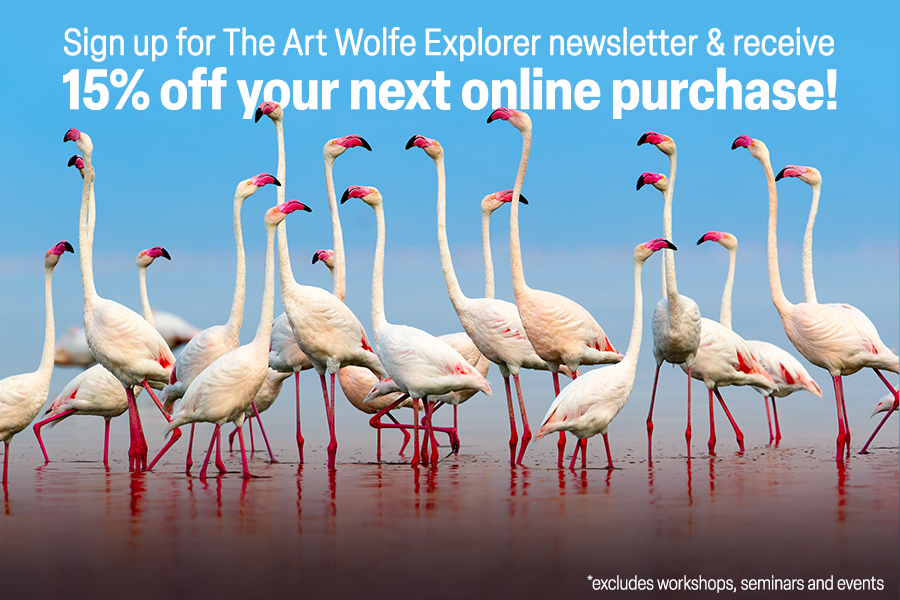Icebergs – Working a Composition
Icebergs and ice are an increasingly important topic in recent years, as climate change is becoming more of a resounding, everyday issue. On a recent trip to Antarctica I developed a personal project of capturing the ice in as artistic of a way as possible. During the day, cruise ship passengers disembarked in Zodiacs to go ashore and view penguins. I have photographed a lot of penguins, so my mission became the ice that was floating in the vicinity. On this particular trip I asked a Zodiac driver to take me over to a distant iceberg that I could see towering over all of the other icebergs. It looked almost like a cathedral, standing out there over a 150 feet above its surrounding neighbors.

This first image shows the dramatic angle of the pinnacle of ice as it’s surrounded by smaller icebergs. As usual I circled my subject and look at it from all angles before settling on an image.

As we travel around the iceberg it takes on a slightly different shape. This new vantage point allows me to incorporate more of the surrounding icebergs in the foreground.

With image number three I am able to incorporate a foreground “bergie bit” (little piece of iceberg) that is found floating around its larger cousins. I am using a 16-35mm wide angle zoom lens and a polarizer to compose this image. My main objective is to balance the foreground ice with the iceberg in the distance.

I put on my 70-200mm zoom and circled back around to the location where I captured my initial composition in image 1. I chose to shoot a vertical to emphasize the vertical sweep of this dramatic iceberg.

I noticed a distant iceberg with an arch and directed the Zodiac to it. As we headed over to it I put my wide angle zoom back on. I circled this iceberg looking for a point of view in which to include with my initial perspective.

This composition reveals the first iceberg in a very beautiful way. I also love the way the green arch surrounds the distant blue icebergs, and how the wide angle gives the image a nice perspective by incorporating some of the blue green ice just below the surface.

I decided to go back to my 70-200 to try to pull in that distant iceberg. This lens allowed me to compress the scene while still keeping the strong foreground element of the arched iceberg in my composition. However, because I am further away now, you can see the blue sky above the arched iceberg. I have lost the drama that I had with the last image.

I zoomed in to try and eliminate the sky from the previous shot,but in doing so I have lost the top of the distant iceberg.

This is my favorite image in the series. It conveys the drama of the arch, it frames the iceberg in the distance perfectly, and it has a nice sense of color with the blues and greens.
The result is 3 or 4 distinctly different compositions of the same iceberg, which demonstrates how perseverance and a change of perspective can yield a stronger set of images.
Learn these and other techniques in our upcoming spring seminar tour to seven major cities throughout the U.S. and Canada. For more information visit the Art Wolfe Workshop Website.


